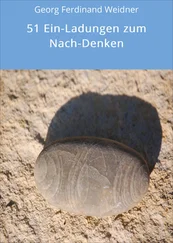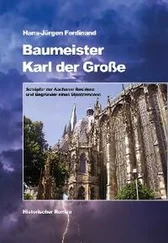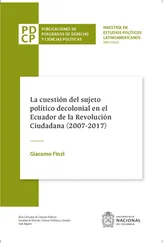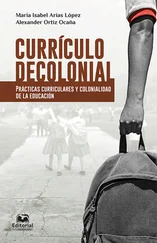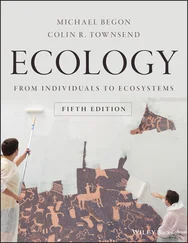The double fracture of modernity refers to the thick wall between the two environmental and colonial fractures, to the real difficulty that exists in thinking them together and that in response carries out a double critique. However, this difficulty is not experienced in the same way on either side, and these two fields do not bear equal responsibility for it. On the environmentalist side, this difficulty stems from an effort to hide colonization and slavery within the genealogy of ecological thinking , producing a colonial ecology , even a Noah’s Ark ecology . With the concept of the Anthropocene, Crutzen and others promote a narrative about the Earth that erases colonial history, while the country of which Crutzen is a citizen, the kingdom of the Netherlands, is a former colonial and slaveholding empire that stretched from Suriname to Indonesia via South Africa, and now consists of six overseas territories in the Caribbean. 17
In metropolitan France [ France hexagonale ], or the Hexagone, environmentalist movements have not made anticolonial and antiracist struggles central elements of the ecological crisis. 18These struggles remain anecdotal or are even ignored within the extensive critiques of technology (including of nuclear power) carried out by Bernard Charbonneau, Jacques Ellul, André Gorz, Ivan Illich, Edgar Morin, and Günther Anders. The damage caused by nuclear tests carried out on colonized lands, such as the 210 French tests in Algeria and those in Polynesia from 1960 to 1996, is downplayed, but so is the damage caused by the plundering of mines in Africa by Great Britain and France and by the exploitation of the subsoil of Aboriginal lands in Australia, the First Nations in Canada, the Navajos in the United States, and of the Black workers forced to extract uranium in apartheid South Africa. 19In addition to transforming the Hexagone, nuclear energy has relied on France’s colonial empire, using mines in Gabon, Niger, and Madagascar – which have long been in use throughout Françafrique – while exposing miners to uranium and radon gas. 20To disavow this colonial fact is to cover up the opposition to nuclear power that has been voiced by anticolonial movements, such as the demand for disarmament made by the Bandung Conference of 1955, or Kwame Nkrumah, Bayard Rustin, and Bill Sutherland’s pan-Africanist rejection of “nuclear imperialism” and French nuclear tests in Algeria, or Frantz Fanon’s denunciation of a nuclear arms race that maintains the Third World’s domination, or the contemporary demands for justice by Polynesians. 21By omitting the colonial conditions for the production of technology, environmentalist movements have missed possible alliances with anticolonial critiques of technology.
Certainly, there were some bridges that were built in light of René Dumont’s commitments to the peasants of the Third World, Robert Jaulin and Serge Moscovici’s denunciations of the ethnocides of the Amerindians and their collaboration with the group “Survivre et vivre” [Survive and live], which led to a critique of the scientific imperialism that serves the West and the rare support of overseas citizens. 22Today, Serge Latouche is one of the few people in France who has placed the decolonial demand at the heart of ecological issues. 23Despite these rare examples, colonized others have not had important speaking roles within the French environmentalist movement, cast away with “their” history to a distant beyond that is reinforced by the illusion of a North/South dichotomy. The result is a sympathy-without-connection [ sympathie-sans-lien ] where the concerns of others that are “over there” are recognized without acknowledging the material, economic, and political connections to the “here.” It is taken as self-evident that the history of environmental pollution and the environmentalist movements “in France” does not include its former colonies and overseas territories, 24that the history of ecological thinking continues to be conceived of without any Black thinkers, 25that the word “antiracism” is not part of the ecological vocabulary, 26and, above all, that these absences do not pose any problems . With expressions such as “climate refugees” and “environmental migrants,” green activists appear to be discovering the migratory phenomenon in a panic, while they make a tabula rasa out of France’s historical colonial and postcolonial migrations from the Antilles, Africa, Asia, and Oceania. So, it remains a cognitive and political embarrassment to recognize that French overseas territories are home to 80 percent of France’s national biodiversity and 97 percent of its maritime exclusive economic zone, without addressing the fact that the inhabitants there are kept in poverty and on the margins of France’s political and imaginary representations. 27Aside from such sympathies-without-connection, the encounter between environmentalist movements and thought of the Hexagone with the colonial history of France and its “other citizens” has not yet taken place. 28
As Kathryn Yusoff notes, this invisibilization results in a “White Anthropocene,” the geology of which erases the histories of non-Whites, and a Western imaginary of the “ecological crisis” that erases colonial experiences. 29A colonial arrogance persists on the part of present-day “collapsologists” when they talks about a new collapse while concealing the connections that exist to modern colonization, slavery, and racism, the genocides of indigenous peoples, and the destruction of their environments. 30In his book Collapse , Jared Diamond describes the postcolonial societies of Haiti and Rwanda through a condescending exoticism that places them in a distant off-world [ hors-monde ] and that does not include any scientists or thinkers from these countries. 31These people, who are “more African in appearance” according to Diamond, are reduced to the role of victims who lack knowledge. 32The colonial constitution of the world and the resulting inequalities are passed over in silence. 33The Anthropocene’s claim to universality seems to be sufficient to dismiss critics of the West’s discriminatory universalism. 34Could it really be that a global enterprise, which from the fifteenth to the twentieth century was predicated upon the exploitation of humans and non-humans, including the decimation of millions of indigenous people in the Americas, Africa, Asia, and Oceania, the forced transportation of millions of Africans, and centuries-long slavery, has no material or philosophical relationship with ecological thinking today? Are the ecological crisis and the Anthropocene new expressions of the “White man’s burden” to save “Humanity” from itself? 35 Fracture .
On the other side, the racialized and the subalterns who are met with repeated refusals of the world feel this double fracture every day in their flesh and in their stories. W. E. B. Du Bois’s “veil” expanded upon by Paul Gilroy’s “double consciousness of modernity,” Enrique Dussel’s “underside of modernity,” and the “White masks” on Fanon’s Black skin or Glen Coulthard’s Red skin are only different ways of describing this violence. 36From 1492 to today, we must bear in mind the incommensurable resistance and struggles on the part of colonized and enslaved men and women in demanding humane treatment, to engage in a profession, to preserve their families, to participate in public life, to practice their arts, their languages, to pray to their gods, and to sit at the same world table. Yet those who carry the weight of the world see their struggles, like the Haitian Revolution, silenced. 37In these pursuits of dignity – those that focus primarily on issues of identity, equality, sovereignty, and justice – environmental issues are perceived as an extension of colonial domination that fortifies the holds, exacerbates the suffering of racialized people, the poor, and women, and sustains colonial silence.
Читать дальше


